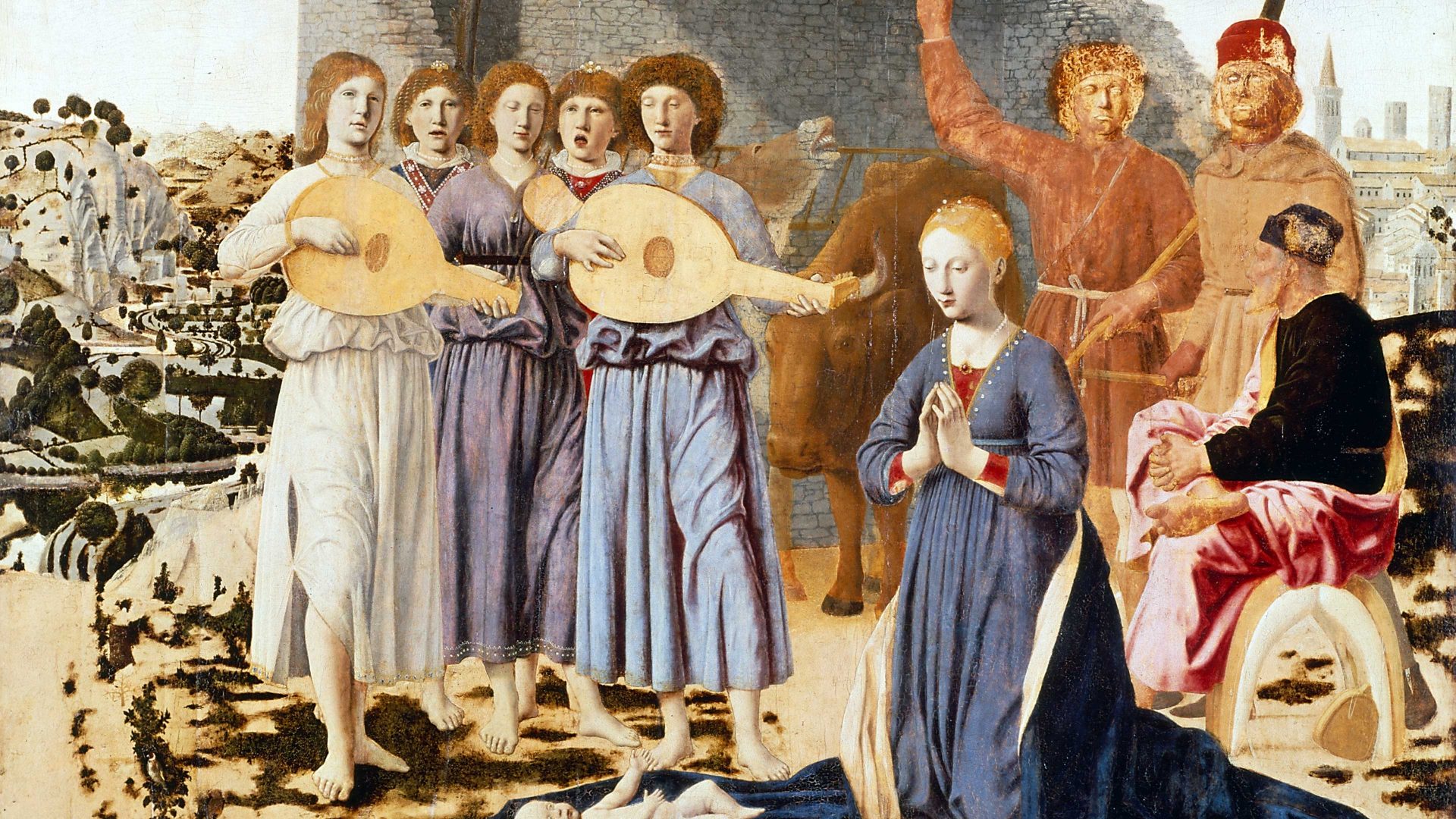The purchase seemed so outlandish, it prompted a question in the House. On June 15, 1874 the honourable member for Peterborough, Mr Thomson Hankey JP, Liberal, quizzed the First Lord of the Treasury, one Benjamin Disraeli, on the recent acquisition by the National Gallery in London of a painting by Pietro [sic] della Francesca. Was £2,415 well spent, he wondered, on a painting that, according to a letter in the Times, was “a wreck and ruined beyond redemption by decay… entirely repainted”.
The prime minister responded with dignity and passion: “I congratulate the country on having acquired, after a severe competition with some of the first galleries and collections at present in existence, a picture of the most rare and interesting character, and which I think will add to the beauty and value of the national collection.” Acquisition number 908 was secure.
The anxieties of Mr Hankey were ill-founded but perhaps understandable. For when Piero della Francesca’s painting in oil on poplar arrived in Britain in 1874 it was reported to be broken into three, and in a dreadful state, thanks to a combination of neglect and overzealous cleaning. There were scorch marks – the votive piece may have stood in a private chapel – the
features of two ruddy-faced shepherds were all but lost, the flowers and grasses around the recumbent infant Jesus had turned brown, and critical features – an eye, a hand – painted across two central panels had vanished.
Nonetheless, The Nativity has gone on to be one of the most loved pictures in the National Gallery’s extensive collection of Italian Renaissance art, and now, after three years of conservation and restoration, lost details have re-emerged.
Five musicians stand alongside the holy family, animals and shepherds in a shabby brick-built shed. The lutenist on the left is plucking with a plectrum
fashioned from a goose or swan’s feather, while the player on the right fingers a more complex melodic line with concentration. Between, half visible, are the viol and bow of a third player. One lutenist may be giving voice too, but it is the lavishly dressed vocalist in the centre who dominates the music, at a time of early polyphony and considerable status for singers.
In the distance, a well-built city reminiscent of the artist’s home town of Borgo San Sepolcro in Tuscany, but with a steeply rising street, emphasises by contrast that the birth has taken place beyond the walls and the care of the city. The mountain view to the left of the picture rises around a meandering river that reflects the landscape as perfectly as a mirror. Two goldfinches, associated by their blood-red plumage with the crucifixion, pick around near the babe, in company with a male chaffinch. A magpie, sometimes associated with excessive chatter, stands on the roof, its beak closed. Even the magpie is silenced by this wondrous event.
Unlike earlier depictions of Mary’s lying-in, this Nativity follows the visionary tradition of Bridget of Sweden, an account favoured by artists in the late 14th and early 15th century. The absence of shadows for the figures,
while the shack is deeply shaded, suggests that, like Bridget, the viewer was to have the sensation of happening upon a vision of perfection. The immaculate new mother’s unsoiled clothing is richly embellished with pearls and she wears a precious jewel around her neck. The singers, too, are
lavishly attired, and the child is porcelain-perfect, laid for comfort on the skirt of his mother’s opulent mantle.
The restoration of this masterpiece, which began behind closed doors during lockdown, helped to inform a rethink about the date of the painting.
Previously thought to have been created in the 1470s, its noticeably Flemish influences now make experts lean towards the early 1480s. In particular, Piero would have come across the work of the Flemish artist Justus of Ghent at the Duke of Montefeltro’s court across the mountains in Urbino, which he
frequented. He would also have seen a triptych in Pesaro by another Flemish
master, Rogier van der Weyden. The slender-faced Madonna, so different from many of Piero’s other female figures, and the sumptuous bunching of fabric are Flemish in style. Even the winding landscape hints at Van Eyck, says the chief conservator at the National Gallery, Jill Dunkerton, who worked on the painting.
The Nativity is newly displayed in a walnut frame, in itself a superbly crafted object of the type Piero would have known. “It’s extremely rare to find such a beautifully carved frame of this period,” says the associate curator of Renaissance paintings at the National Gallery, Laura Llewellyn.
Piero, born between 1415 and 1420 into a comfortably off and well-connected family, probably painted this work for his own home, a very
substantial townhouse that can be visited today. Here too was his muscular depiction of Hercules, a reference to his mother’s birthplace, the nearby town of Monterchi. The strong man lost his legs when a doorway was cut through, and suffered further indignities when the fresco was then detached and sold, finally being shipped to America to join the collection of Isabella Stewart Gardner in Boston in 1903.
Other works by Piero are relatively few and far between, probably fewer than 20. They include a pregnant Madonna in Monterchi, works in the ducal palace of Urbino, and his expansive masterpiece, a fresco cycle in the church of San Francesco (romantically simulated in Anthony Minghella’s film The English Patient). The National Gallery has three in all – The Nativity, The Baptism of Christ, and Saint Michael.
Even though the artist lived into his late 60s or early 70s, it is not necessarily the case that there were many other pieces now lost, says Dunkerton. Piero did not need to paint for a living, and may well have devoted the later years of his life to mathematics, not because he was losing his sight, as often theorised, but because he chose to immerse himself in that discipline. The composition of his works is shot through with an understanding of geometry and perspective that withstands the most analytical scrutiny.
And yet the art of Piero della Francesca has been hugely influential, especially latterly with modernists, who found its stillness and directness compelling. “Piero never lays it on thick,” says Llewellyn. “He’s so interested in naturalism. There’s always a quietness.”
Jill Dunkerton agrees. “He’s not an artist you can just get in two minutes. You have to give him some time.”
The Nativity is on display in Room 17a at the National Gallery. Other works by Piero della Francesca are in Room 14
Claudia Pritchard is a freelance journalist who writes about the visual arts, opera and classical music




